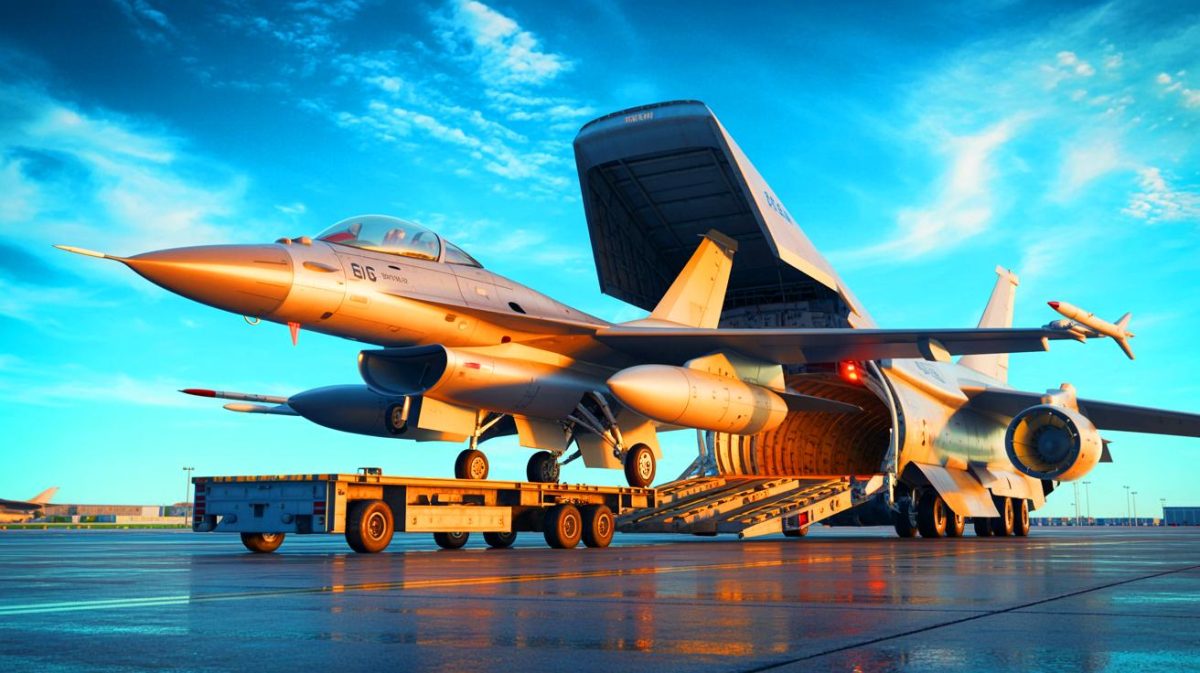| IN A NUTSHELL |
|
The United States has embarked on a significant mission to support Ukraine by providing non-operational F-16 airframes. This strategic move underscores the deepening military cooperation between the US and Ukraine amidst the ongoing conflict with Russia. The initiative aims to bolster the logistical capabilities of Ukraine’s fighter fleet, ensuring operational readiness and sustainability in challenging times. The transfer of these airframes, though not combat-ready, plays a crucial role in maintaining the effectiveness of Ukraine’s Western-supplied fighter jets.
Transferring Retired US Jets for Spares
The decision to transfer retired F-16 airframes to Ukraine marks a notable shift in US support strategy. According to The War Zone, these airframes, devoid of essential components like engines and radars, are intended solely for spare parts. This approach is part of a broader effort to sustain European-donated F-16s to Ukraine, ensuring a steady supply of hard-to-source components. The logistical network supporting this initiative highlights the intricate coordination between NATO and Ukraine.
Visual evidence has shown these airframes being loaded onto transport aircraft at Tucson International Airport, Arizona. The proximity to Davis-Monthan Air Force Base, a major storage site for retired aircraft, suggests the airframes were sourced from there. These airframes, primarily Block 15 Air Defense Fighter variants, were once part of the Air National Guard. This transfer underscores the strategic importance of logistical support in modern warfare, enhancing Ukraine’s ability to maintain a high mission-capable rate for its operational fleet.
Ukraine’s F-16 Jet Fleet
Although the retired airframes won’t numerically increase Ukraine’s combat-ready fleet, their strategic value is undeniable. By providing critical spare parts, these airframes will significantly enhance the operational readiness of Ukraine’s F-16s. Currently, approximately 85 operational F-16s have been pledged to Ukraine by various European nations. This includes contributions from the Netherlands, Denmark, and Norway, with some aircraft allocated specifically for spare parts. Belgium has also pledged additional jets.
General Christopher Cavoli, Commander of US European Command, has indicated that more F-16s are being prepared for Ukraine. However, many of these jets are designated for pilot training at Romania’s European F-16 Training Center. This complex logistical arrangement highlights the commitment to ensuring Ukraine’s long-term defense capabilities, even as the immediate focus shifts toward sustaining existing assets.
Strategic Implications of the Airframe Transfer
The US’s decision to supply non-operational F-16 airframes instead of flyable jets reflects a strategic pivot in its military support for Ukraine. This approach emphasizes long-term logistical sustainability over immediate combat capability. The scarcity of flyable F-16s, coupled with their use in training and as targets, has prompted a reevaluation of support strategies. The US Air Force’s efforts to extend the service life of newer F-16 variants further demonstrate the ongoing relevance of these aircraft.
This transfer strategy offers Ukraine a reliable source of spare parts, allowing it to maintain its air fleet’s operational readiness even as tensions with Russia persist. The initiative illustrates the evolving nature of military support, prioritizing sustainable logistics over direct military engagement. By focusing on the long-term viability of Ukraine’s air capabilities, the US reinforces its commitment to supporting Ukraine’s defense needs.
Looking Ahead: Sustaining Ukraine’s Defense Capabilities
As the conflict in Ukraine continues, the transfer of non-operational F-16 airframes highlights the importance of strategic logistics in modern warfare. The initiative underscores the need for sustained support to maintain operational readiness amidst ongoing challenges. By providing essential spare parts, the US is ensuring that Ukraine’s fighter fleet remains effective and mission-capable.
This approach reflects a broader trend in military support, where logistical sustainability is prioritized alongside direct military aid. As the US and its allies continue to adapt their strategies to meet evolving defense needs, the question remains: How will this focus on long-term logistical support shape the future of military alliances and cooperation?
Did you like it? 4.6/5 (27)









Est-ce que c’est vraiment suffisant pour choquer la Russie ? 🤔
Une décision stratégique audacieuse mais nécessaire, à mon avis. 🌟
Pourquoi ne pas envoyer aussi des avions en état de marche ?
Je me demande combien de temps ces pièces détachées resteront utiles.
C’est un bon exemple de coopération internationale ! Merci aux États-Unis. 🙏
Les Russes doivent être vraiment inquiets maintenant ! 😂
Je pense que c’est une excellente stratégie pour le long terme.
Est-ce que cela pourrait mener à une escalade du conflit ?
Les F-16 sont-ils encore pertinents dans ce type de conflit ?
Merci aux États-Unis d’aider l’Ukraine à se défendre. ❤️